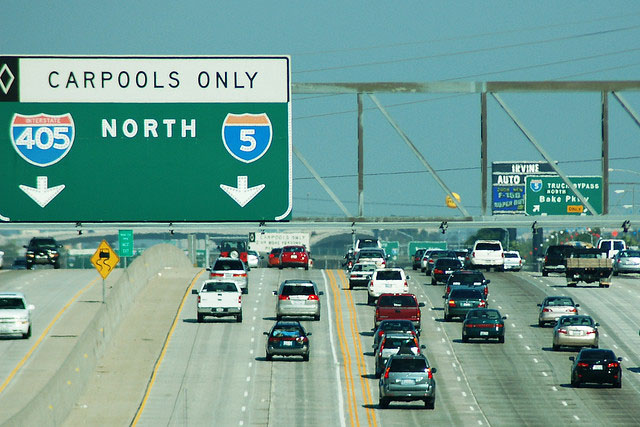

California is making early progress toward its goal of reducing the use of motor vehicles, but more creative and aggressive public policies will be necessary to get people to switch from driving to walking, biking and using public transit, according to a new report from the Public Policy Institute of California.
One of the best options, the report concludes, would be to increase the cost of driving by replacing or supplementing the gas tax with fees that charge motorists according to how far they drive on the state’s roadways. The fees might also reflect the type of road used, the time of day and the kind of vehicle driven.
The report looks at the early implementation of a new law known as SB 375, which seeks to reduce the emission of greenhouse gases believed to be responsible for global warming. The bill encourages local governments and regional transportation planners to adopt policies that make it easier for Californians to live, work and play without using a car. The California Air Resources Board, which is implementing the law, hopes to reduce the number of vehicle miles traveled per person by 7 percent by 2020 and at least 13 percent by 2035.
The authors noted several areas where progress is visible: transit ridership is increasing, local officials recognize the importance of integrating land use policies with transit, road-pricing policies and parking, and local government are adopting policies to support the goals of SB 375.
But hurdles remain.
The biggest, perhaps, is that the state and local governments have been encouraging the development of housing near transit stations when it is jobs and transit that need to be closer to one another. If people don’t live near a transit station they can still drive or bike to one and take a train to work. But if the train lets them off far from work, it can be difficult to get to their job on the other end.
Rail ridership has increased only from .9 percent of all commute trips in 1990 to 1.4 percent in 2008, a far slower rate of increase than fare hikes and service expansions. Employment density — the number of jobs per square mile — is low and declining as employers move from central cities to roomy campuses in the suburbs. The report suggests relaxing requirements on parking spaces at new job centers and expanding the use of feeder buses to give commuters more options once they get off a train.
The report’s authors also note that while reducing vehicle miles traveled will be difficult and yield only a small portion of the reduced emissions the state is hoping for from all sources, the same policies will also provide broader public health benefits by encouraging people to walk and bike rather than drive.
To see the full report, go here.
.







You must be logged in to post a comment.